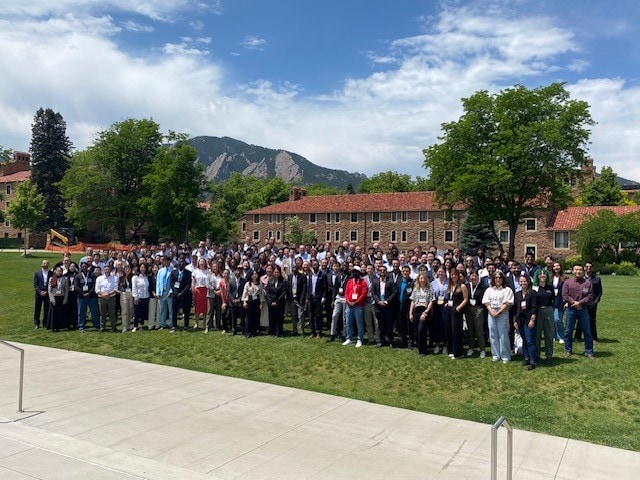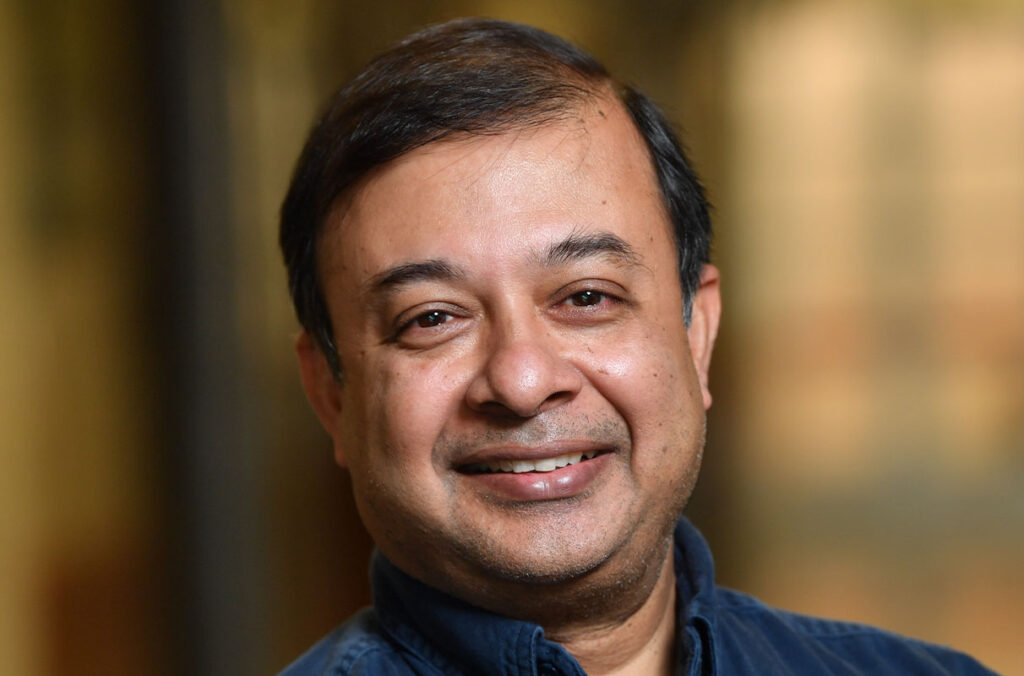
[Image above] Credit: John Mauro
For someone not even halfway through his career, John Mauro has traveled an interesting path.
Mauro just completed his one-year anniversary as professor of materials science and engineering at The Pennsylvania State University (State College, Pa.). Prior to that, he spent 18 years at Corning Incorporated, where he worked in research to “develop new models for glass viscosity, glass relaxation behavior, topology, and more,” according to his LinkedIn profile.
But his most significant achievement was as co-inventor of one of the company’s most successful products: Corning Gorilla Glass.
So how does one decide to make a career out of glass?
The seeds of Mauro’s career were planted when he was six years old when his parents took him to the Corning Museum of Glass. It “captivated his imagination,” he recalls, “especially in seeing how glass could take on a variety of colors, forms, and shapes.”
Later, in one of his high school classes, a teacher presented a video about the use of glass to enable optical computers. “I had always loved computers and programming,” Mauro says. “I decided I wanted to study the computational aspects of glass and materials.
“Everything just came together,” he adds.
Mauro eventually applied and got accepted to Alfred University, where he earned a Bachelor of Science degree in glass engineering science, a Bachelor of Arts degree in computer science, and ultimately his Ph.D. in glass science. And he mentions Arun Varshneya as a mentor who was instrumental in helping him establish his career path. “He was my advisor for my undergrad degree as well as my Ph.D.,” Mauro says. “He helped to give me a solid foundation on which to build my career.”
An ACerS member for life
Mauro discovered ACerS when he was a freshman at Alfred. “They had an active student chapter, and we were encouraged to join,” he says. He also earned first place in a scholarship competition organized by the National Institute of Ceramic Engineers, the predecessor to the Education and Professional Development Council. And from there, he immersed himself in ACerS activities.
His early involvement included two years in ACerS Future Leaders program—a program he says provided “the most practical leadership training for young professionals I’ve ever experienced.”
Mauro believes that joining ACerS was a good career move. “It was a huge opportunity for me, in terms of my own development, and in giving back to students and other young professionals.”
Mauro is a member of ACerS Basic Science and Bioceramics Divisions; but he is most deeply involved in the Glass & Optical Materials Division, where he has organized symposia and sessions and has given many talks at its annual meetings over the years. Mauro also served as program chair for the GOMD annual meeting in Corning in 2010, which was noted for nearly doubling the number of participants compared to previous meetings—creating momentum that has carried over to all subsequent GOMD meetings. In October, he will teach as part of a short course, “Introduction to Machine Learning for Materials Science,” at MS&T18. Mauro currently serves on GOMD’s executive committee.
And if that isn’t enough to keep him busy, Mauro is also program chair for the 25th International Congress on Glass, taking place in Boston, Mass., June 9–14, 2019, and what he refers to as the “largest glass meeting in the world.”
Mauro feels strongly about the benefits he’s received from being an ACerS member and became a Lifetime Member earlier this year.
“ACerS is very much like a family, and by far the most of any professional Society I’ve ever belonged to,” he reflects. “The family-oriented aspect is so fundamental to ACerS. It’s a large community of people looking out for each other, helping each other grow together, and supporting each other. That’s what ACerS has been in my experience and I hope will always continue to be. We know that we’re all in this together for the good of ceramics and glass.
“And this is especially true with the GOMD,” he adds.
And what advice would Mauro give to others, especially students, who are considering joining ACerS and getting involved in a Division?
“Join—and get involved! People have so much to gain and so much to learn by getting involved, whether it’s learning something new in research, participating in meetings, or reviewing for ACerS journals. All of these have a positive impact on our community, our profession, and our individual careers.”
There has never been more truth to the saying that the more effort you put into something, the more you get out of it. Perhaps that has been Mauro’s mantra all along.
John Mauro, an ACerS Fellow and Lifetime Member, is an editor of the Journal of the American Ceramic Society. He has also received numerous awards, including ACerS Norbert J. Kreidl Award, Alfred R. Cooper Fellow and Distinguished Speaker Awards, Richard M. Fulrath Award, and Karl Schwartzwalder Professional Achievement in Ceramic Engineering (PACE) Award.
Author
Faye Oney
Spotlight Categories
- Member Highlights


